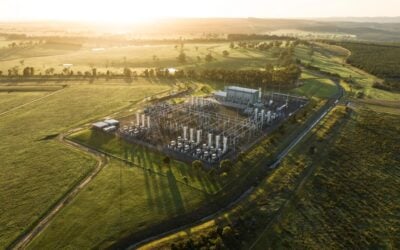Ontario generates a lot of its power from hydroelectric (pictured) and is home to a 170MW pumped hydro system that is more than six decades old. Image: Flickr user: Adam Beck Complex, Ontario Power Generation.
Ontario’s successes in creating and fostering a market and industry for energy storage owes a lot to policy makers taking a coherent, long-term view of its entire energy sector, according to a representative of Canada's only energy storage trade association.
The Canadian province implements its Long-Term Energy Plan on a three-yearly cycle, and has put the delivery of a “clean, reliable and affordable” energy system at its heart, Rob Harvey of Energy Storage Ontario said at an event in London yesterday.
Enjoy 12 months of exclusive analysis
- Regular insight and analysis of the industry’s biggest developments
- In-depth interviews with the industry’s leading figures
- Annual digital subscription to the PV Tech Power journal
- Discounts on Solar Media’s portfolio of events, in-person and virtual
Energy Storage Ontario and three companies, vertically integrated PV manufacturer Canadian Solar, lithium ion battery maker Electrovaya - which acquired German manufacturer Litarion Evonik in 2015 - and fuel cell and power-to-gas specialist Hydrogenics, attended a round table event, hosted by the provincial government and held at the Canadian High Commission, which is the North American country’s main diplomatic presence in Britain.
The 2013 iteration of Ontario’s LTEP mandated the procurement of 50MW of energy storage, including 35MW by the Independent Electricity System Operator (IESO), which is responsible for delivery of power in the province. Many of those projects are already underway, with Canadian Solar awarded a 4MW lithium battery-based project to support the grid. At the beginning of this year, Leclanché said it would be providing 13MW of storage with 53MWh duration over several projects, to be used for voltage control and in providing reactive power support to the grid.
Additionally Ontario, the largest and most populous of Canada’s provinces, just completed a large-scale solar auction for 140MW of capacity which finished with a weighted average price of CA$0.1567/kWh (US$0.12).
Energy storage's role in replacing 'must run' thermal generation
The LTEP looks not just at electricity but also gas and transportation, although the majority of work carried out so far has been in the former. ESO’s Rob Harvey explained how the emphasis on “clean, affordable and reliable” had benefitted not just renewables, but also electricity storage. Ontario shut the last of its remaining coal power plants in 2014 and decided to refurbish nuclear facilities that were between 30 and 40 years old to extend their lifespan by around 20 years.
“That helps with the equation, it’s clean and it’s affordable,” Harvey said.
“There’s parts of the energy plan to increase the [amount of] wind and solar. We’ve got 25% hydro in Ontario, 50% nuclear, 10% thermal, so only 10% of our grid is carbon-based, in terms of electricity generation. The goal is to get it up to 10,700MW of wind and solar to continue that plan and not all through feed-in tariffs (FiTs). So the LTEP is balancing all those things.”
“What played in our favour, for energy storage, is a big part of the equation is integrating renewables, it’s helping to manage the grid - but it’s not strictly that. If you look, because we closed all the coal plants, we’ve got a cleaner grid, but we’ve got much less flexibility in our grid. So you’ve got issues in Ontario or challenges with our surplus baseload nuclear production.”
In other words, energy storage can replace some of the so-called must-run capacity of thermal generation. Instead of coal or gas plants having to run 24/7 to keep the grid balanced, energy storage can respond quickly to signals from the grid to intervene in short bursts. NextEra CEO Jim Robo said peaker plants could be replaced completely by batteries over the next few years, while the UK is launching a much-talked about tender for enhanced frequency response (EFR), allowing batteries the chance to function in this space.






